Everything You Need to Know to Design a Greener Home
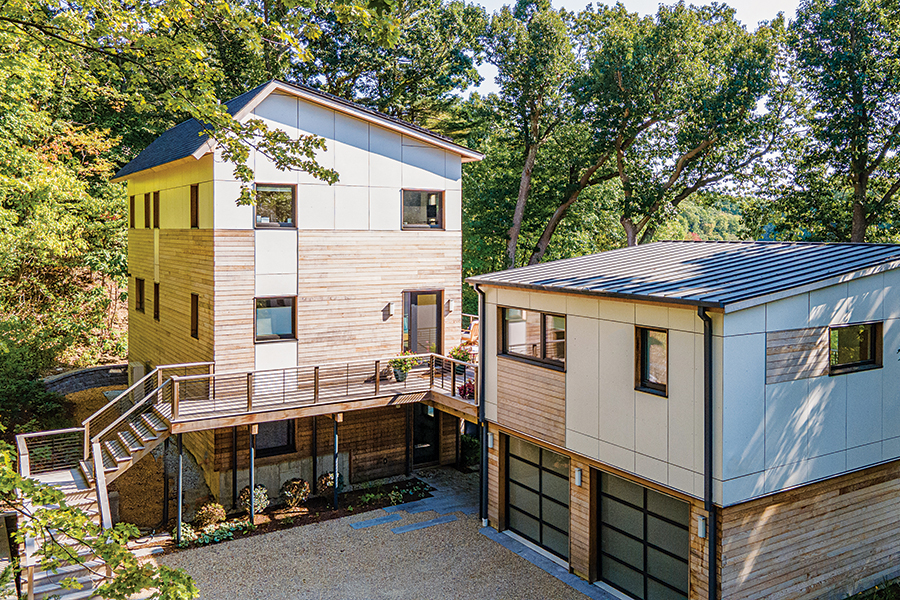
Photo by Eric Roth
Want to protect the planet? Build greener homes. From employing eco-friendly materials to considering energy efficiency at every turn, three local dwellings embody the best of sustainable design—and offer a promising example for the spaces of tomorrow.
Geothermal in New Hampshire
Solar Energy in Harvard
Net-Zero in Hingham
Plus, Master the Vernacular; Art of the Appliance; The More, the Merrier; Go, Go Gadget; and Materials Matter.
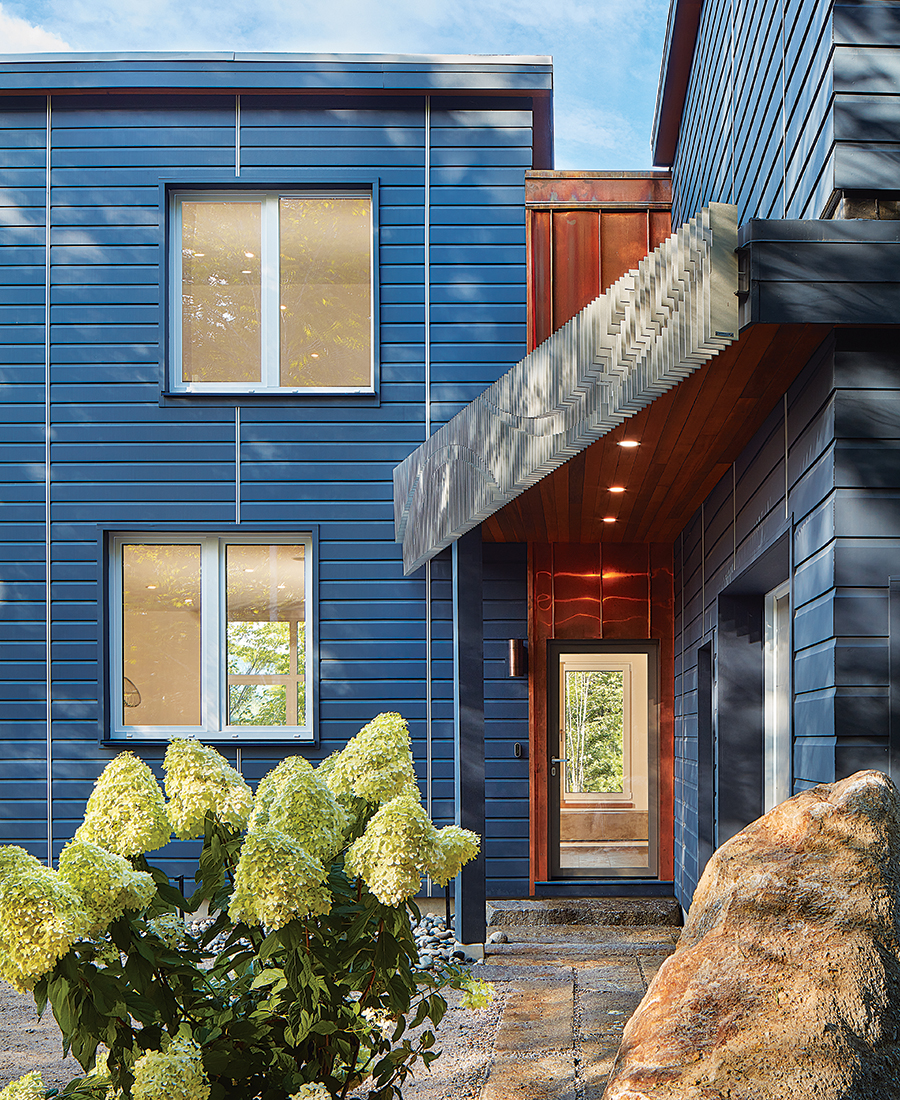
Photo by David Kurtis
Green Getaway
Bloom Architecture and Haycon Building design a forward-thinking vacation home on a New Hampshire lake.
By Andrea Timpano
After years of vacationing at a family property on the shores of New Hampshire’s Lake Winnipesaukee, a Somerville couple felt ready to tackle a different kind of adventure: building a brand-new hideaway on the nearly 11-acre site, originally purchased by the wife’s mother in the early 1990s. Intended as a replacement for the property’s existing home—a small cabin clocking in at around 800 square feet—the new house would better highlight the woodsy locale while offering a more comfortable fit for the pair and their four children. It would also incorporate geothermal and passive-solar elements, in accordance with the couple’s eco-conscious values.
For design help, the husband and wife turned to Derek Bloom and Cody Pratt at Bloom Architecture, who worked alongside contractors at design-build company Haycon to bring the couple’s nuanced vision to life. At 3,374 square feet, the finished house feels distinctly contemporary, with thoughtful, view-friendly glass expanses and free-flowing spaces—to say nothing of the ground-source heating features and clever insulation tricks that minimize the home’s overall environmental impact. “I think it’s a nice medium ground between capturing the value and beauty of the site and balancing [sustainability] needs very well,” Haycon partner David Bemiss says.
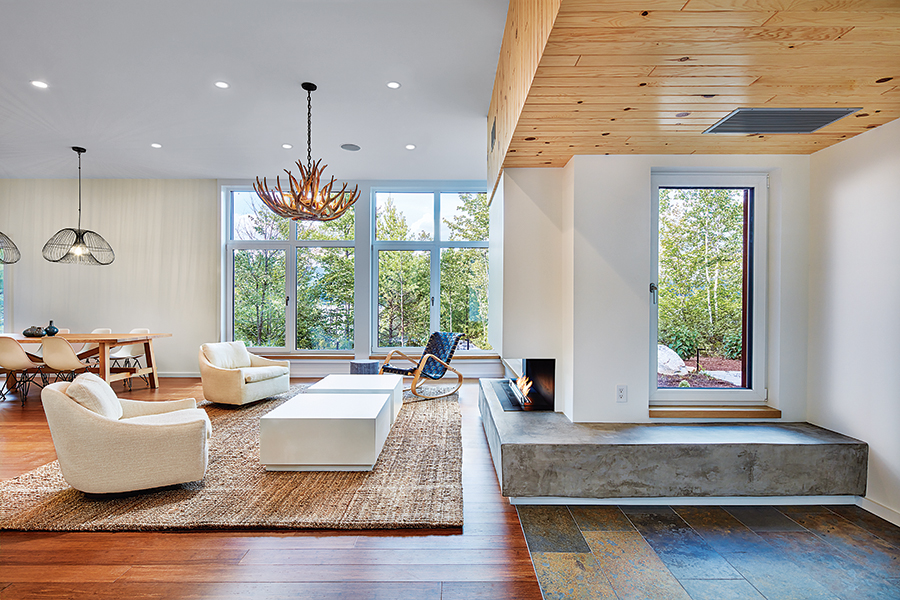
Photo by David Kurtis
Set the Mood
Contemporary style with a touch of cabin-chic dominated the plan for the interior of the home, which acts as a lake house during the warmer months and a ski house come wintertime. “We knew that the house would be modern, but I also wanted to integrate timeless and iconic cabin things—the antler chandelier [in the living area], the pine paneling, the slate flooring—because that’s my traditional experience of New Hampshire,” the wife says.
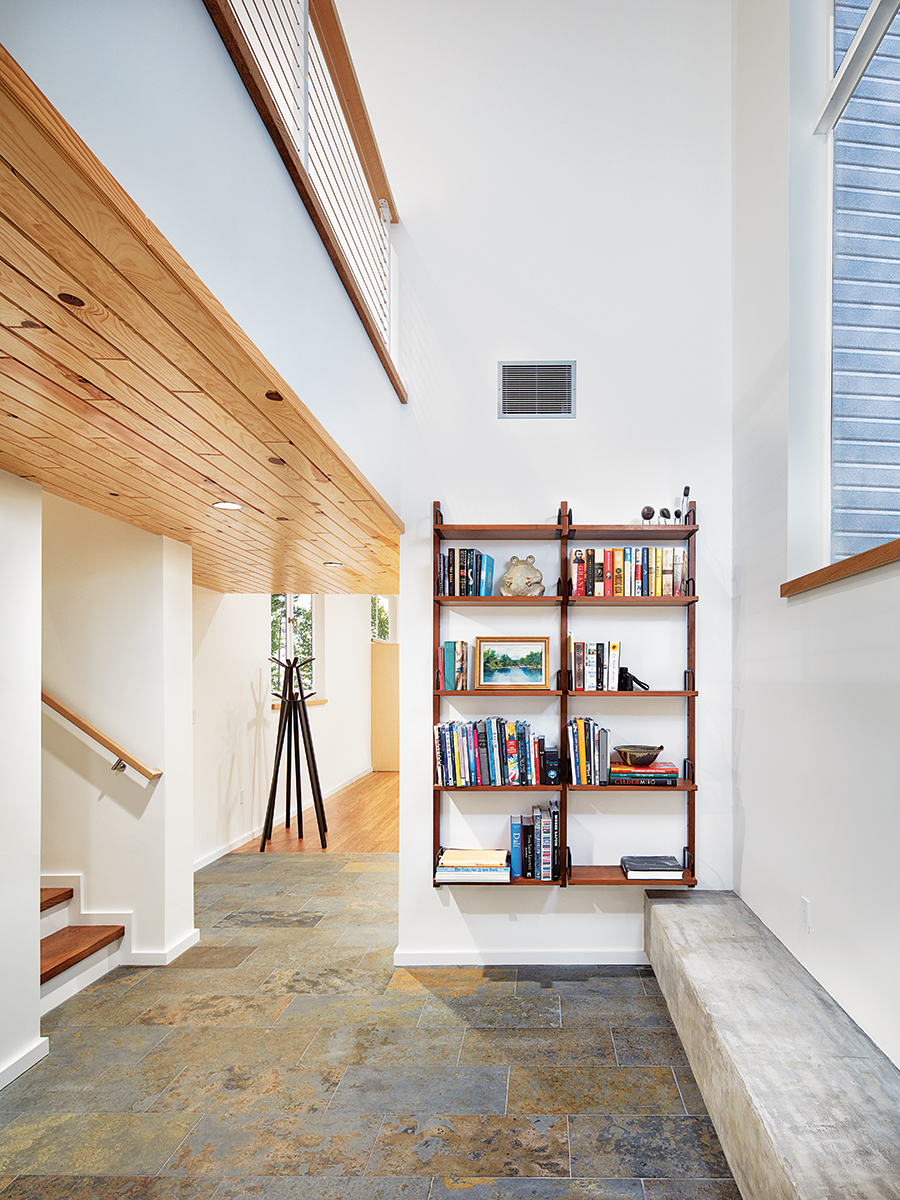
Photo by David Kurtis
Minimize Impact
Sustainable touches aren’t limited to the house’s envelope: They appear throughout the finishes, too, from the Plyboo “Stiletto” flooring—made from responsibly harvested bamboo—to the LEED-certified Benjamin Moore paint. “Anytime we could get a low-impact, sustainable product for the interior, that is the choice we made,” the husband says.
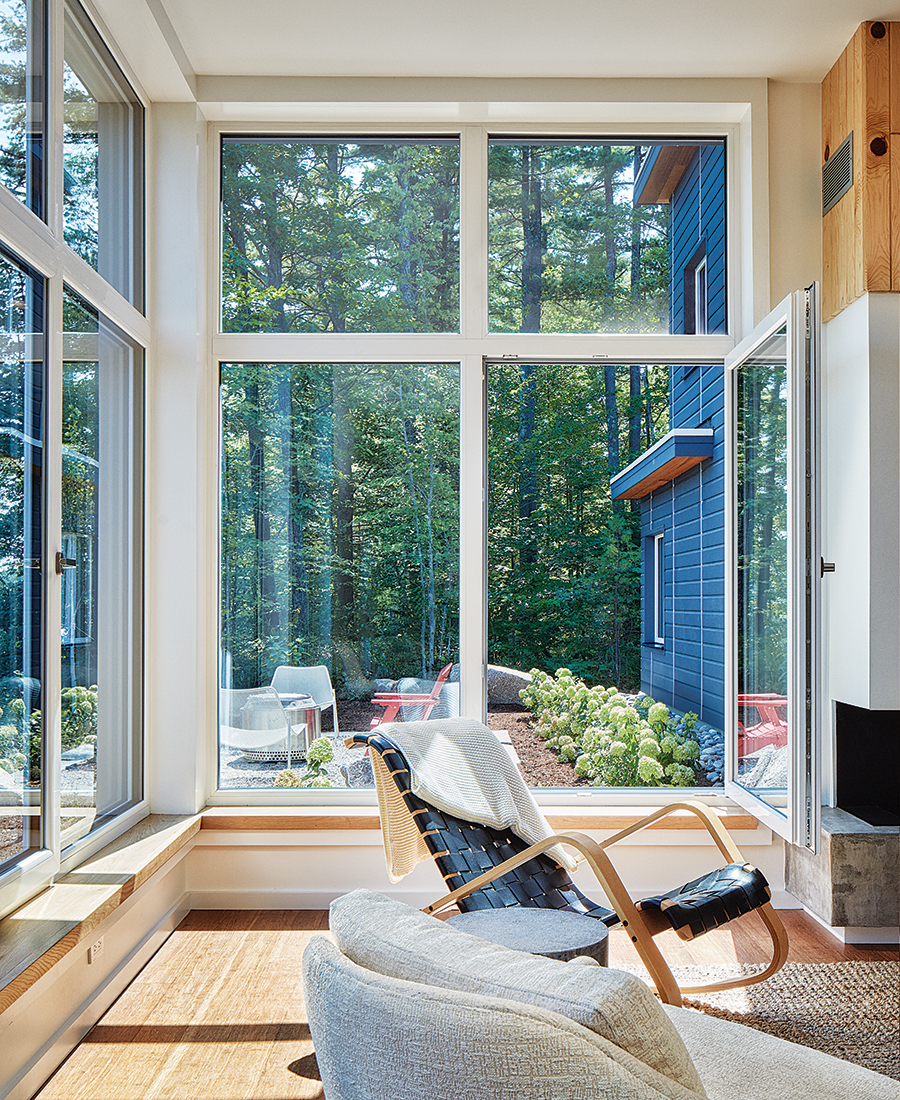
Photo by David Kurtis
Build Mindfully
To fulfill the couple’s request for an eco-friendly home, the team erected a double-walled structure, which allowed them to “super-insulate” the house, prevent energy loss, and “reduce the loads for heating and cooling,” Bloom explains. Plus, the house’s temperature is managed by a geothermal heat pump, which eliminates the need for fossil fuels. Another piece of the puzzle? The triple-paned windows, which were methodically placed to filter in sunlight and assist with heating.
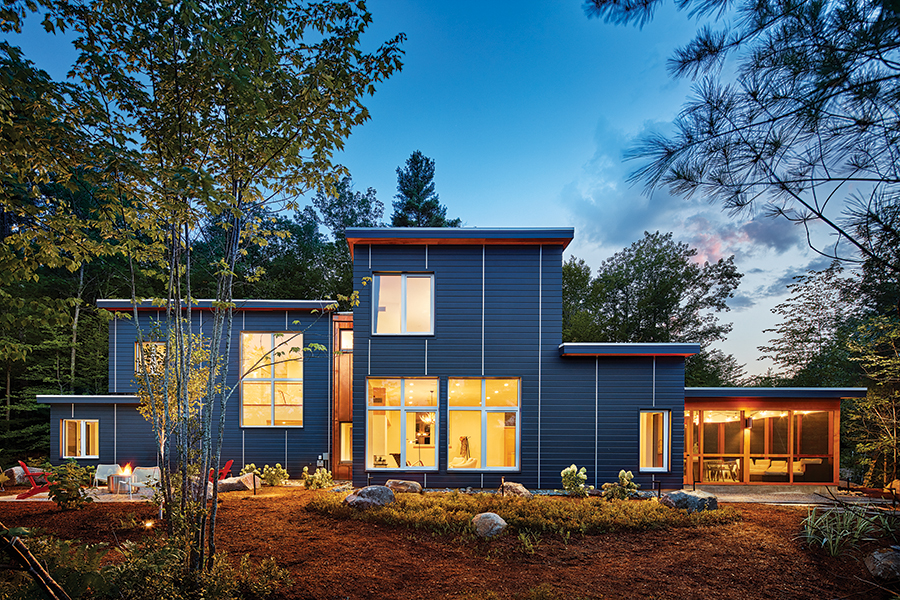
Photo by David Kurtis
Love the Land
When it came to the clearing for the new house, Bloom says that fostering privacy and “respecting the forest” were top priorities for the team, who worked to preserve as much of the tree line as possible while still affording ample views of the lake. New Hampshire–based Terrain Planning & Design, meanwhile, took the lead on landscaping, incorporating found boulders and low-maintenance native plantings into the scheme, which also features a fire pit.
Architect
Bloom Architecture
Contractor
Haycon Building
Landscape Architect
Terrain Planning & Design
Landscape Contractor
stephens landscaping professionals
Structural Engineer
TLH Consulting
Master the Vernacular
Need to brush up on your sustainability lingo? Start here.
Geothermal Energy
Heat derived from the earth. Per the U.S. Department of Energy, this clean and renewable resource is harnessed by drilling wells that tap into hot-water reservoirs beneath the earth’s surface.
Passive Building
A set of design principles “used to attain a quantifiable and rigorous level of energy efficiency,” according to Passive House Institute US. These include continuous insulation, an airtight building envelope, high-performance windows and doors, heat- and moisture-recovery ventilation, and a low-energy heating/cooling system.
Zero-Energy House
A residence that produces at least as much energy as it uses, “leaving the occupants with a net-zero energy bill and a carbon-free home,” according to the Zero Energy Project, an education-focused nonprofit.
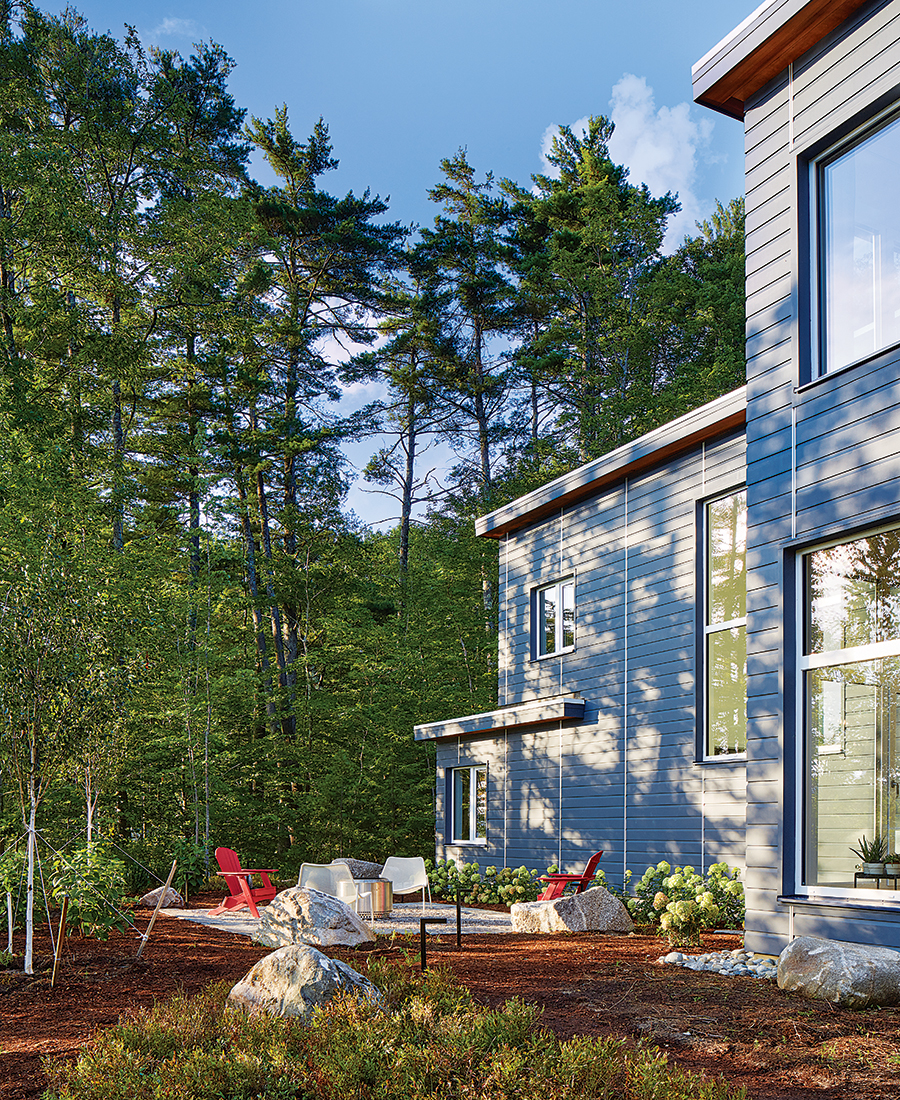
Photo by David Kurtis
DESIGN TIP
“It’s helpful to start the design of a new sustainable home without a preconceived notion of what it will look like. When you’re prioritizing sustainability, the forces of the site, the sun, and the requirements of the envelope will begin to give the house form. Of course, we remain in control of what the house will look like, but we let these performance issues inform all decisions.”
—Derek Bloom, Bloom Architecture
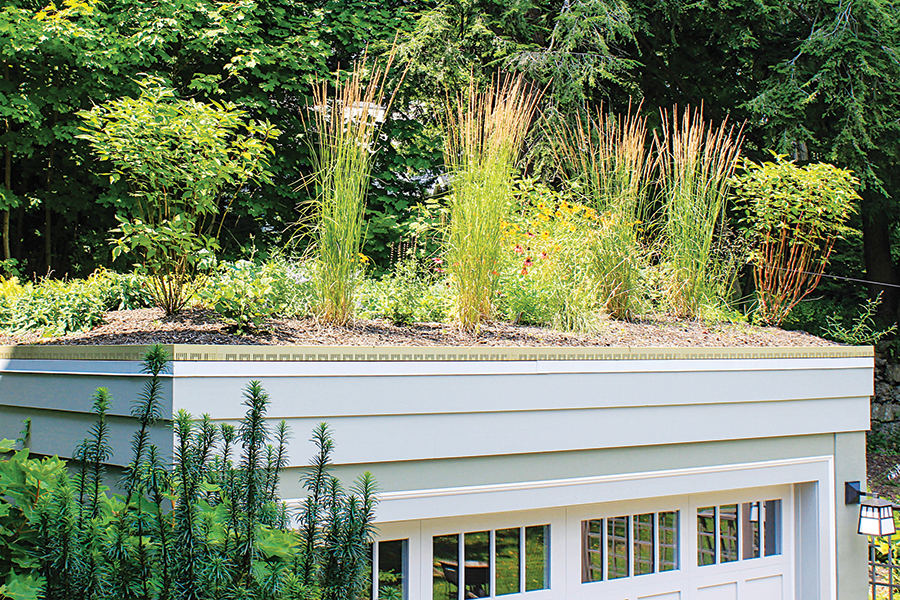
Photo courtesy of Recover Green Roofs
A Different Kind of Green Space
Looking for an outside-the-box way to boost the health of the environment? Install a green roof. According to Somerville-based Recover Green Roofs, which designed and installed the space below, this vegetated feature can help insulate your home, reduce air pollutants, and manage storm-water runoff, among other benefits.
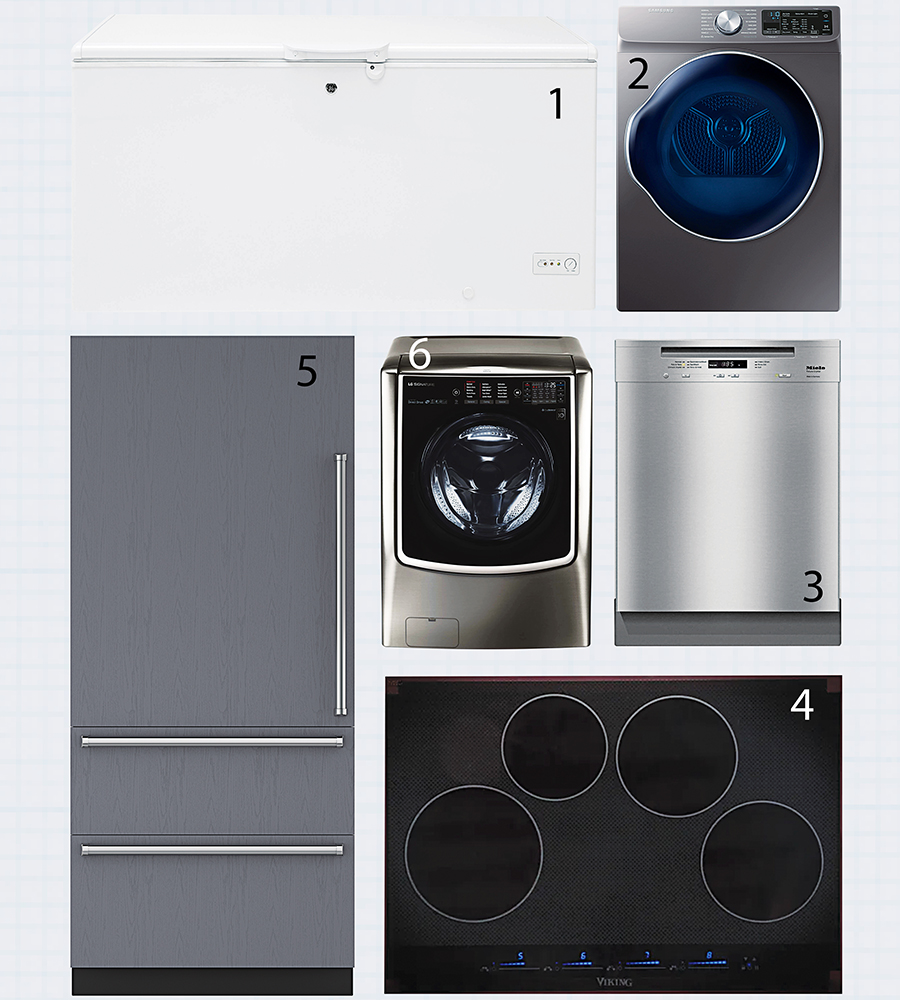
Courtesy photos
Art of the Appliance
Energy efficiency is just part of the appeal of these sleek devices, sourced from local shops.
1 GE “FCM16DLWW” chest freezer, price upon request, Poirier. A GE freezer with sliding storage baskets and an alarm for temp increases? Pretty handy.
2 Samsung “DVE22N6850X” dryer, price upon request, KAM Appliance.* Think: sensors that let you know when your clothes have achieved ideal dryness. Thanks, Samsung.
3 Miele “G6625SCU” dishwasher, $1,799, Yale Appliance.* Ultra-quiet cycles and a water-softening feature are two of this Miele machine’s many amenities.
4 Viking “MVIC6304BBG” induction cooktop, $2,809, Jarvis Appliance. Free of fossil fuels, induction cooktops—like this Viking beaut, complete with a durable glass-ceramic surface—are green by nature.
5 Sub-Zero “IT-36CI” refrigerator, price upon request, Clarke Showroom. This customizable Sub-Zero model impresses with LED lighting and a NASA-inspired air-
filtration system.
6 LG “WM9500HKA” clothes washer, price upon request, Boston Appliance.* One of the most eco-friendly washing machines on the market, this LG standout earns bonus points for WiFi connectivity.
*Named to Energy Star’s “Most Efficient 2021” list
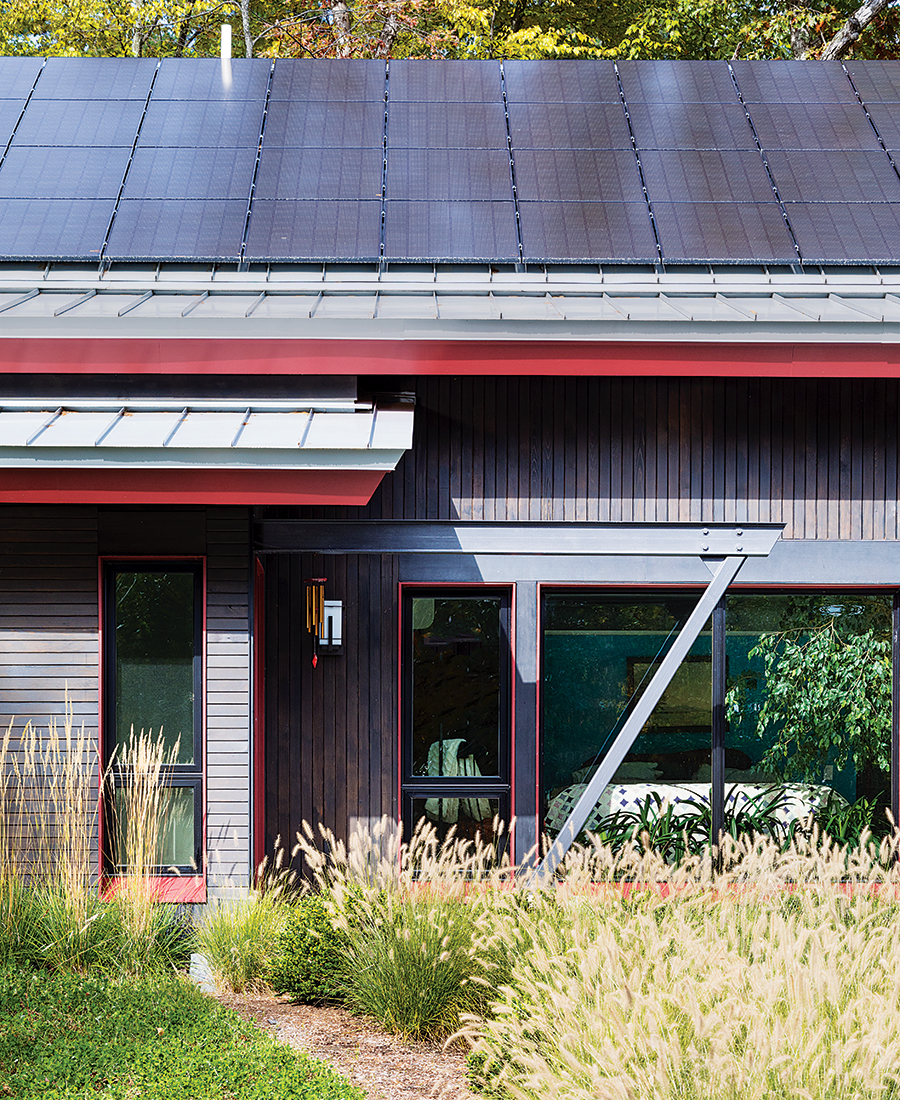
Photo by Greg Premru
Force of Nature
Paul Lukez Architecture harnesses the sun to power a couple’s home and car in Harvard.
By Rachel Kashdan
After a Lexington couple heard about a net-zero-energy project that architect Paul Lukez had recently dreamed up for another family in town, they quickly got in touch to see if Lukez’s firm could help them design something similar. “They were in the process of retiring and were thinking about the next stage of their life and building a net-zero-energy home,” Lukez recalls. Their first task after teaming up with Lukez? Finding the ideal plot of land for their eco-oasis. After months of searching, they eventually discovered a tree-filled spot in Harvard: a rocky site that bordered conservation land and had once been part of a farm.
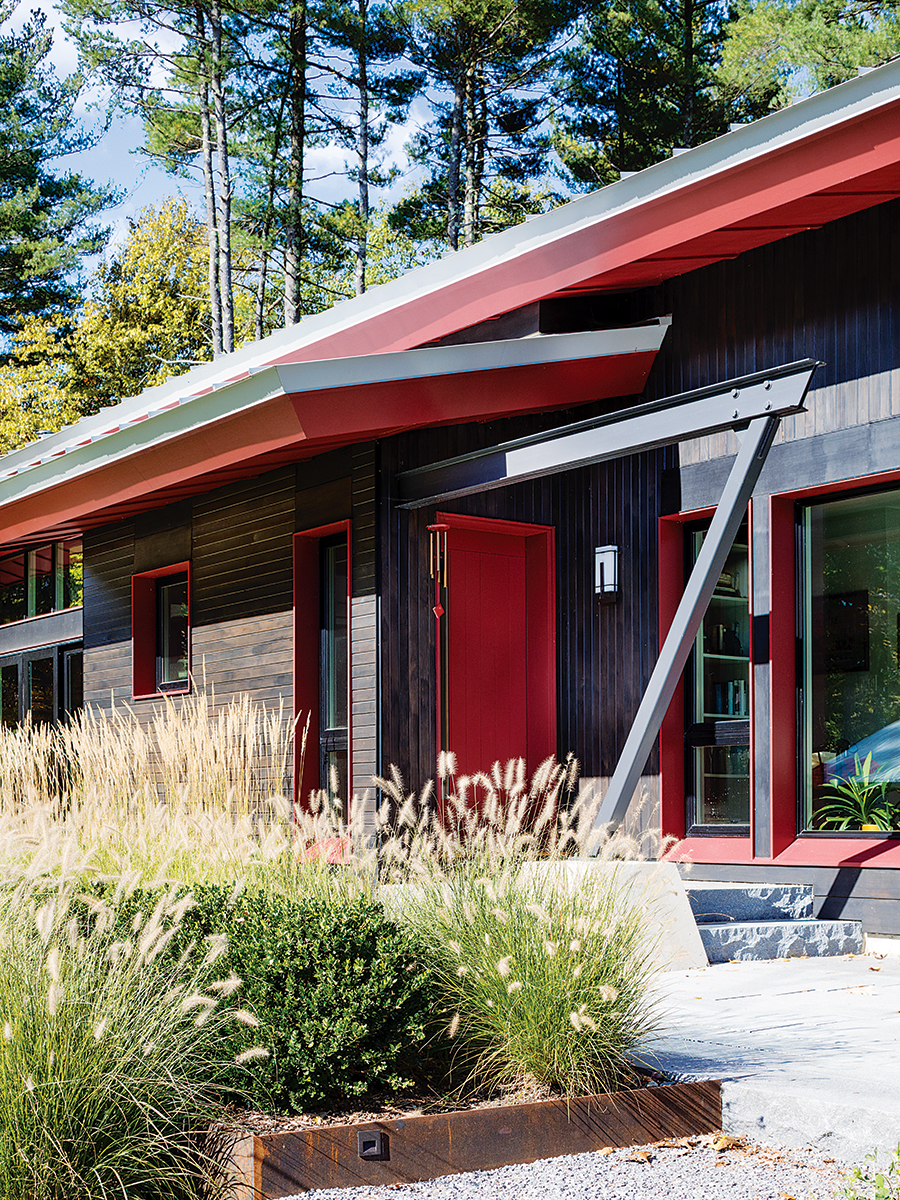
Photo by Greg Premru
Fast-forward through a nearly two-year design-and-construction process, and the area now boasts the couple’s 2,200-square-foot home. Utilizing passive-house design principles, a sprawling rooftop solar array, and onsite batteries to function as an energy-independent dwelling, the space feels comfortable for two while blending seamlessly into the landscape. “It’s a promising model for the future,” Lukez says. “We may be at a tipping point where through a combination of technological, financial, societal, and other [factors], people will increasingly integrate these kinds of ideas and systems into their own homes and neighborhoods. I believe it bodes well for a greener, more carbon-free environment.”
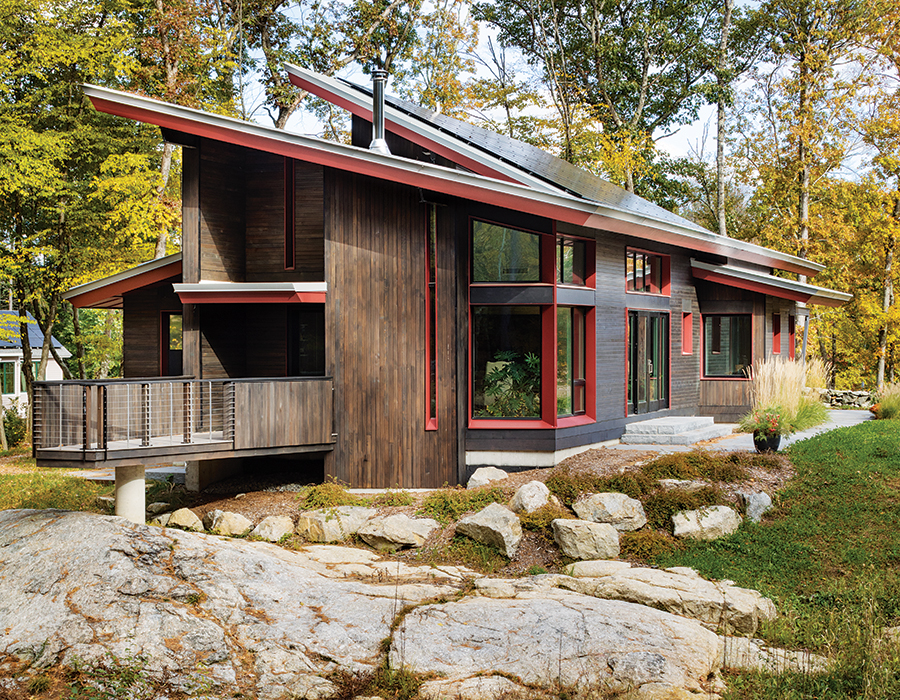
Photo by Greg Premru
Tighten the Envelope
Windows on the south side of the home stream in light while their triple-glazed panes and the walls’ 12-inch-thick insulation help retain the sun-generated warmth. On hotter days, meanwhile, the roof’s large overhang provides enough shade to prevent sunlight from overheating the house’s interior.
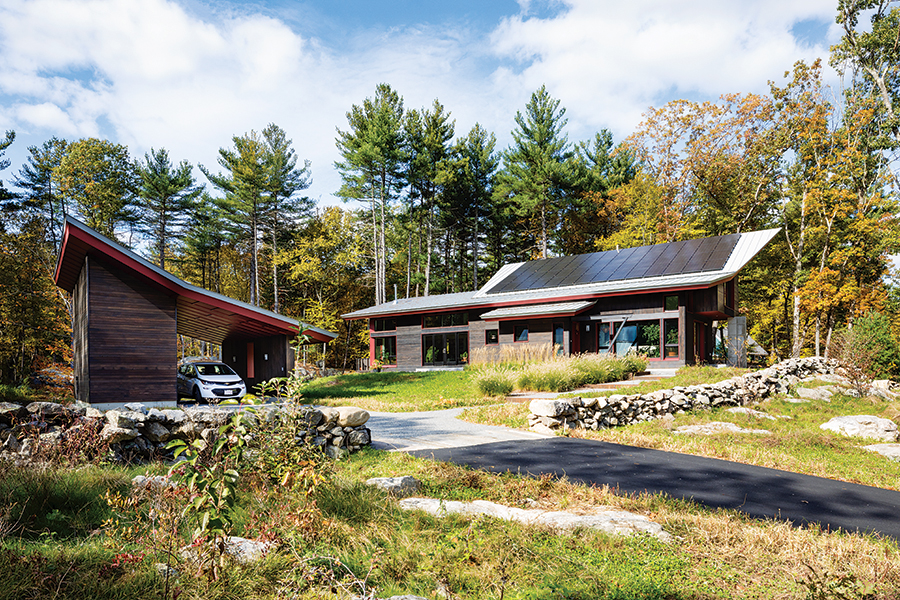
Photo by Greg Premru
Gather Energy
Fifty-six solar panels power both the house and the couple’s electric car. Lukez’s team also outfitted the home with two batteries that store enough energy to sustain it without sunlight for about four days. “Energy is collected by the solar panels during the day, but most people use their homes more at night,” Lukez says. “You can collect that energy and put it into the batteries so when [the clients] come home at night and want to turn on the lights, they’re running it off the batteries.”
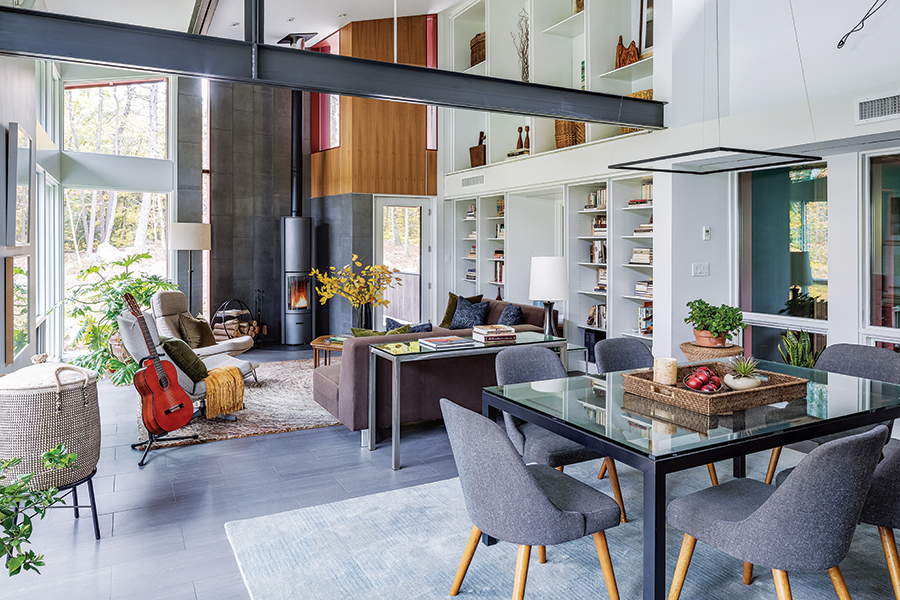
Photo by Greg Premru
Streamline Interiors
The inside of the home—which features a sleek wood-burning stove—is sunny, simple, and highly efficient. “They wanted everything to be pretty compact. A lot of spaces serve double functions,” Lukez says.
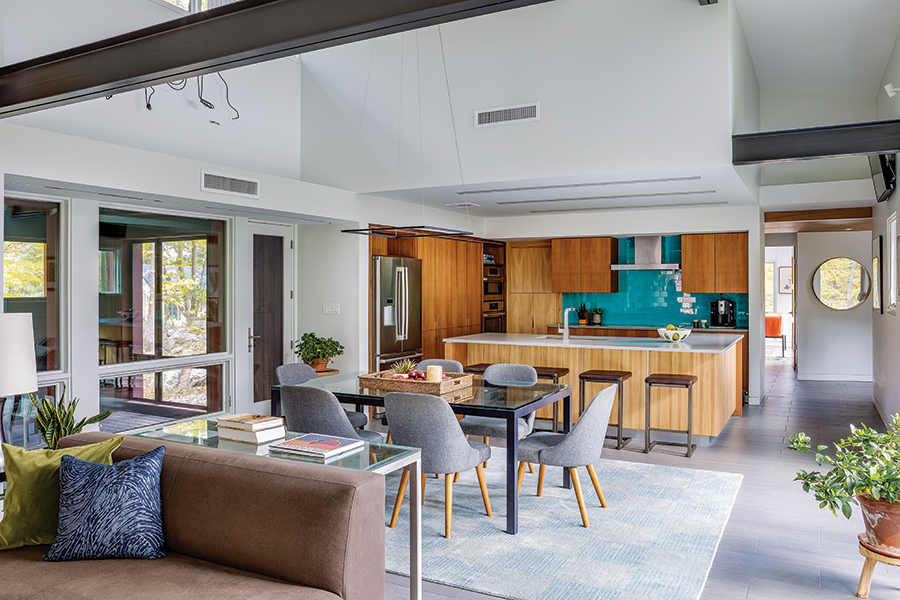
Photo by Greg Premru
Embrace Natural Beauty
The couple opted for finishes with an organic feel, such as slate-colored porcelain tile flooring and custom walnut kitchen cabinetry from Michael Humphries Woodworking. Not only do these materials match the scenery outside, but they also provide a clean backdrop for books and artwork the pair has collected while traveling over the years (think: a large wire sculpture by local artist Steve Lohman).
Architect
Paul Lukez Architecture
Contractor
G. Donahue & Sons
Landscape Architect
Sego Design
Solar Installer
Solworks Energy
The More, the Merrier
Sustainable design isn’t just for single-family homes. Here, discover three local apartment buildings with green features galore.
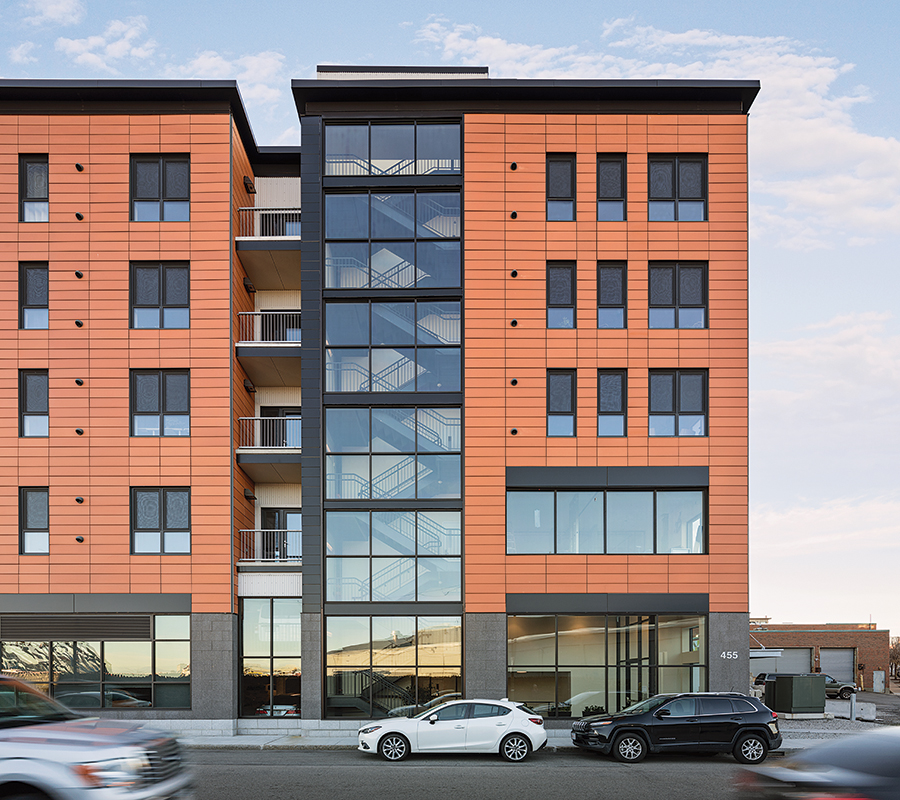
Photo by Trent Bell
The Distillery North
Location: South Boston
Number of Units: 28
Touted as “the most environmentally sustainable building of its size in the Boston area,” per its website, this Southie standout designed by Boston-based ICON Architecture promotes green living with a rooftop garden, solar panels, electric-vehicle charging stations, and more.
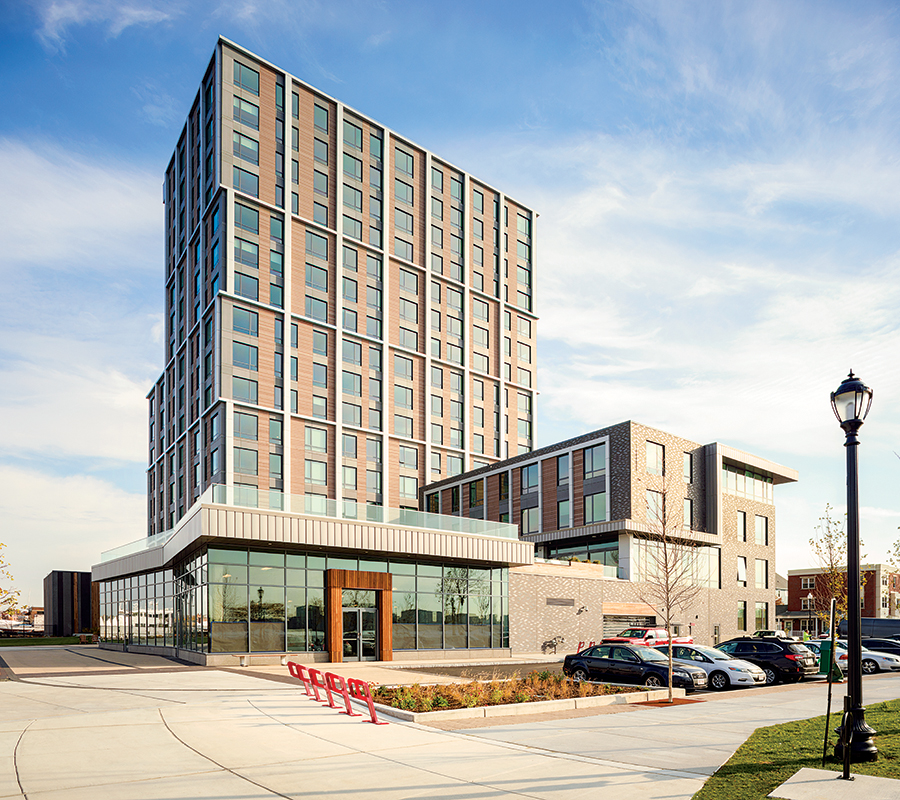
Photo by Trent Bell
The Eddy
Location: East Boston
Number of Units: 258
Non-toxic paints, a green-cleaning program, and recycled-content flooring help this waterfront residence achieve its LEED Gold certification, awarded by the U.S. Green Building Council.
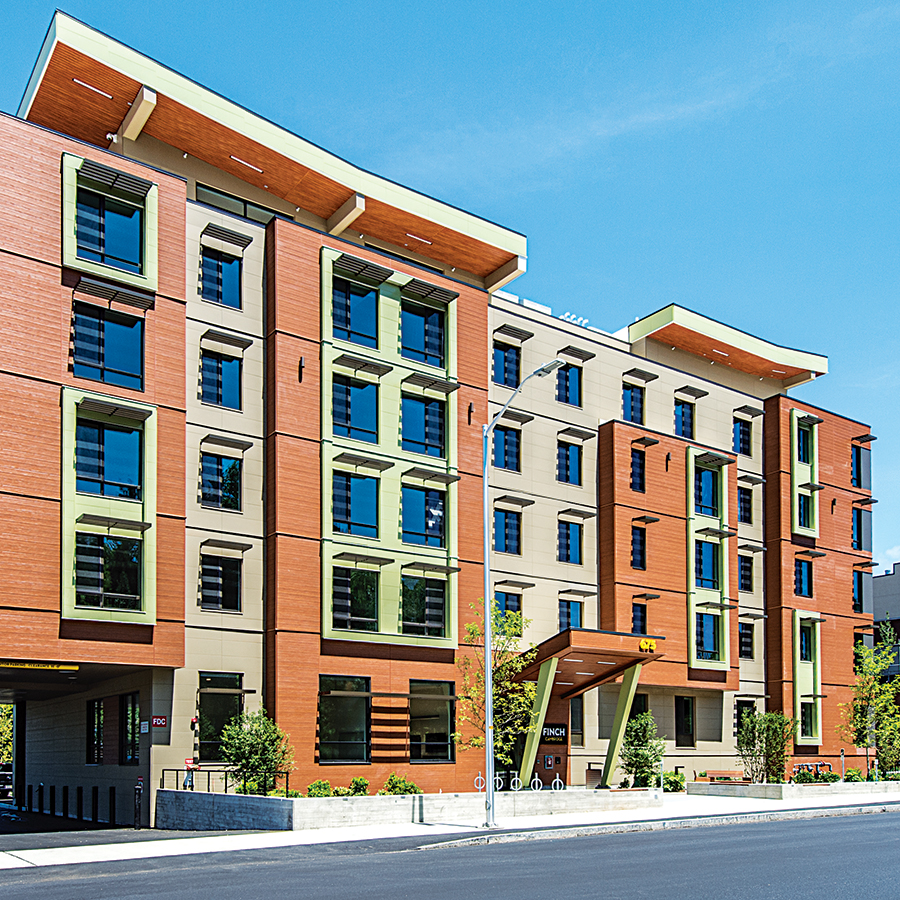
Photo by Gregg Shupe
Finch Cambridge
Location: Cambridge
Number of Units: 98
Also designed by ICON Architecture, this Concord Avenue dwelling, which—like the Distillery North—is Passive House–certified, sports triple-glazed windows, Energy Star appliances, and high-efficiency fixtures.
Go, Go Gadget
From a voice-activated faucet to a dog treat–dispensing camera (yes, really), here are six Smart Home contraptions we’ve got our eyes on.
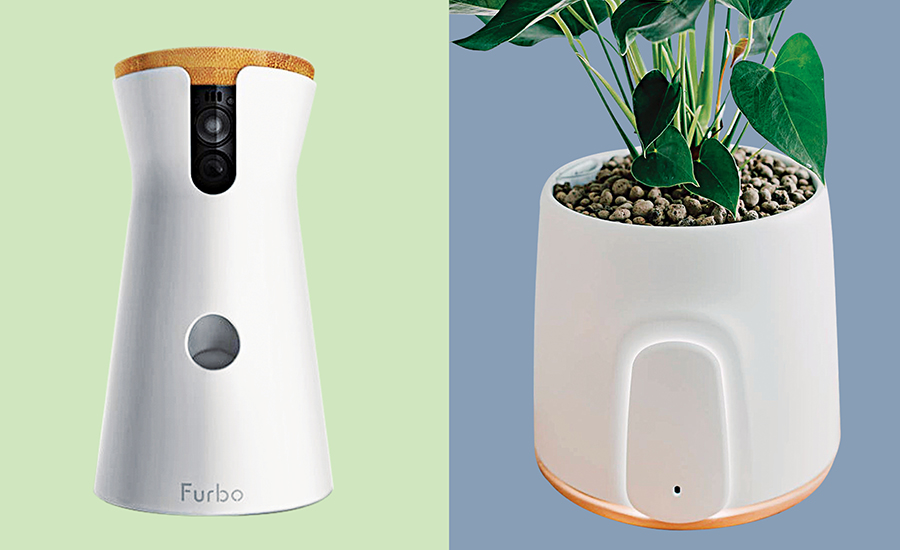
Courtesy photos
Left Dog camera, $249, Furbo. Live video footage is just the tip of the iceberg for this HD camera, capable of tossing Fido treats and notifying you when he’s barking or there’s a home emergency.
Right “Natede” air purifier with ceramic filter, €399, Vitesy. Ten trees are planted with each purchase of this bacteria-banishing air purifier, outfitted with sensors for VOCs, carbon monoxide, humidity, and more.
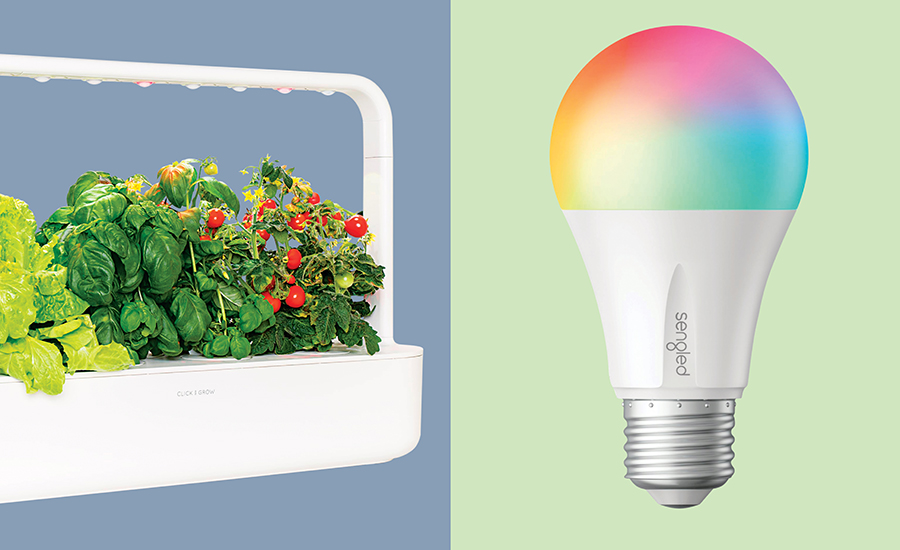
Courtesy photos
Left “Smart Garden 9” self-growing garden, $200, Click and Grow. This app-backed device’s automatic-watering feature and energy-efficient LED lighting make easy work of growing organic herbs and veggies.
Right Sengled LED lightbulb, $45 for two, Best Buy. When you install one of these color-changing gizmos, you’ll have your choice of more than 16 million hues—each programmable from your smartphone or tablet.
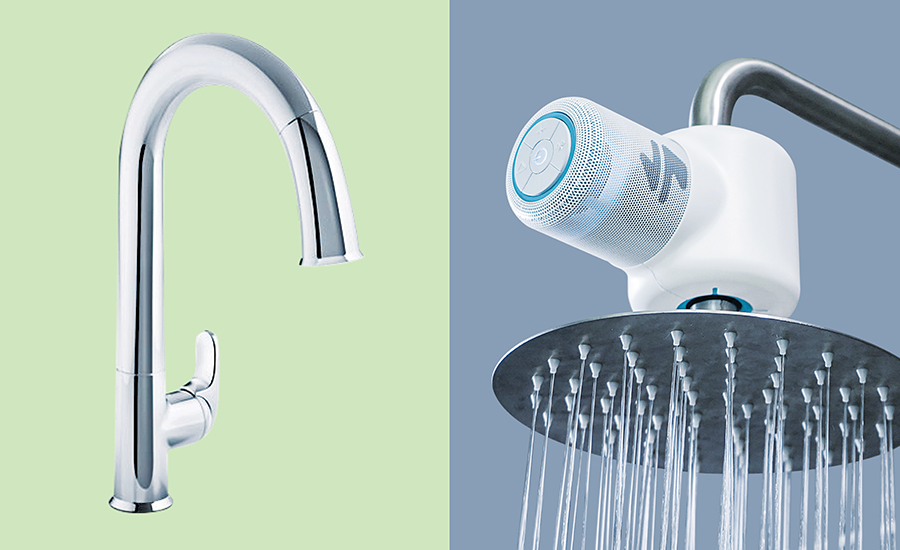
Courtesy photos
Left “Sensate” faucet with Kohler Konnect, $1,171.45, Kohler Signature Store. Conserving water is easy with this voice-controlled, touchless Kohler faucet, which dispenses only as much H2O as you request.
Right Ampere “Shower Power” recycled plastic speaker, $100, Indiegogo. Powered by the water running through your showerhead, this bathing-time Bluetooth speaker—born of a Kickstarter crowdfunding campaign—comes with a waterproof remote.

Photo by Greg Premru
design tips
“Through the design and engineering phases, you can digitally model and simulate the home’s design as well as projected energy performance. Make use of these powerful digital tools!”
—Paul Lukez, Paul Lukez Architecture
“Keep a long-term mindset when making decisions; your home will outlast you. For example, address the Beauty and the Brains (energy efficiency, durability, health, thermal comfort, and decoupling from fossil fuels).”
—Stephanie Horowitz, ZeroEnergy Design
Materials Matter
Up your space’s sustainability factor with eco-friendly finishes.
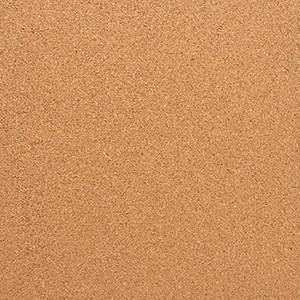
Photo via Josh R./Flickr
Cork
An excellent insulator of heat and sound, to say nothing of its undeniable tactile quality, this adaptable gem—derived from the bark of cork-oak trees—can be used for everything from wallcoverings to flooring to furniture.
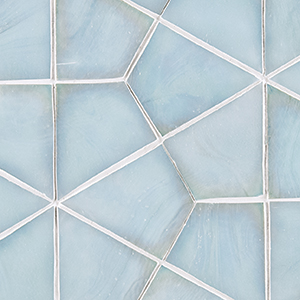
Photo courtesy of Ann Sacks
Recycled Glass
According to the World Wide Fund for Nature, glass crafted from its recycled counterpart helps reduce air and water pollution. Find it in tile (like this Ann Sacks model), countertops, and more.
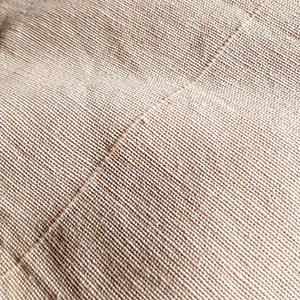
Photo via Melissa Manning/Pixabay
Natural Textiles
Synthetic fabrics such as acrylic or polyester are hard to recycle and may require chemicals for fabrication. Organic cotton, silk, and linen, meanwhile, are all chemical-free and biodegradable.
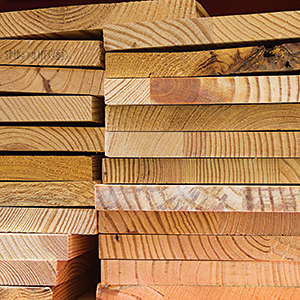
Photo via Antmoreton/Pixabay
FSC-Certified Wood
If you can’t get your hands on reclaimed planks, seek out hardwoods with this designation, granted by the Forest Stewardship Council; they hail from responsibly managed forests.
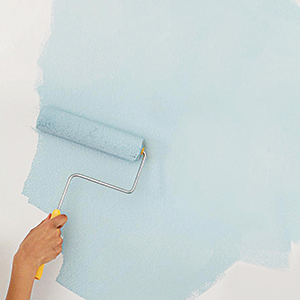
Photo courtesy of Clare
Zero-VOC Paint
Comprising 5g/L or less of volatile organic compounds (VOC) such as formaldehyde, acetone, and ethanol, zero-VOC paints are more conducive to healthy air quality than their chemical-laden foils. Look for colors from brands including Clare (pictured), Benjamin Moore, and Ecos Paint.
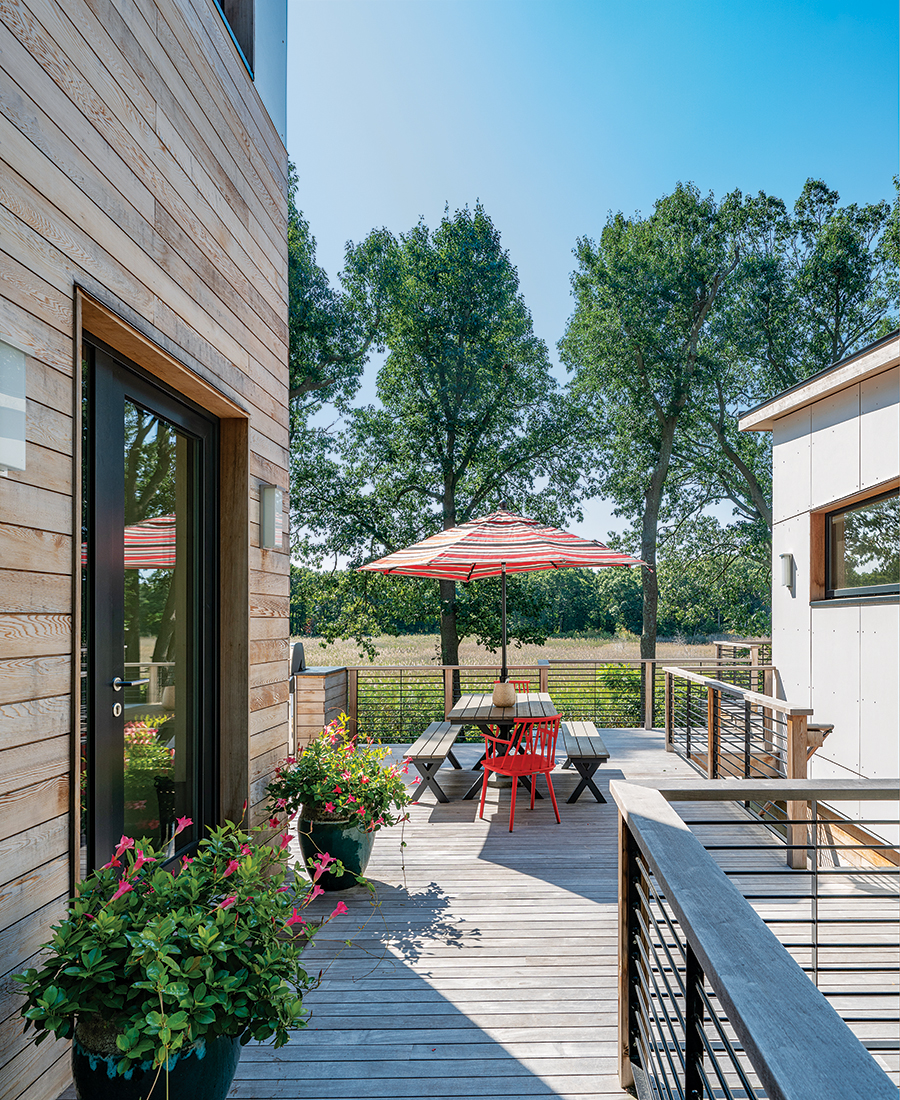
Photo by Eric Roth
Staying Power
ZeroEnergy Design creates a durable eco-oasis on the South Shore.
By Rachel Kashdan
While a Hingham couple loved their secluded property with views of a neighboring marsh, they were no longer enamored with the ’80s-era house that sat upon it. “They were looking for a new home that would make better use of this site,” says Stephanie Horowitz, managing director of ZeroEnergy Design, the Boston firm the pair hired to build them an updated house on the property. The two also wanted their new digs to allow them to live a greener lifestyle. “They felt that going net-zero would be the most [enduring] and ecologically responsible option,” Horowitz adds.
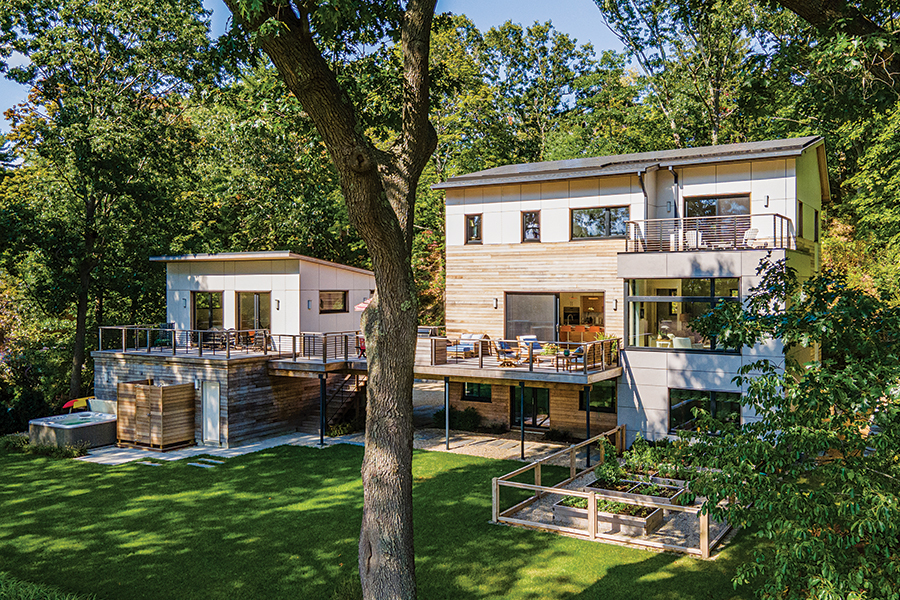
Photo by Eric Roth
So the team got to work, building a 4,200-square-foot dwelling that embraces the natural surroundings (picture: multiple decks and a large vegetable garden). Thanks to a private guest studio above the garage, it also offers their young adult children a place to feel at home while visiting. As for the couple’s net-zero-energy plans? The house sports 36 rooftop solar panels, extra insulation, and efficient ventilation, heating, and cooling systems. “It’s really a wonderful living environment for the homeowners,” Horowitz says.

Photo by Eric Roth
Elevate the Entryway
Horowitz and project manager John Mucciarone designed a sustainably forested ipe-wood staircase to connect the driveway to a deck on the second level, which comprises the house’s main entry, the kitchen, and the dining and living areas. “The placement of this stair invites visitors up to where you’re presented with this beautiful view of the marsh,” Horowitz explains.

Photo by Eric Roth
Take It Outside
To maximize the home’s connection to the outdoors, Horowitz designed distinct al fresco living areas for each of its levels. The second-floor deck, which connects to the kitchen through an oversize sliding glass door, includes a built-in grilling station and a dining area. Meanwhile, one story down behind the garage, the architect positioned a jacuzzi with an adjoining outdoor shower.
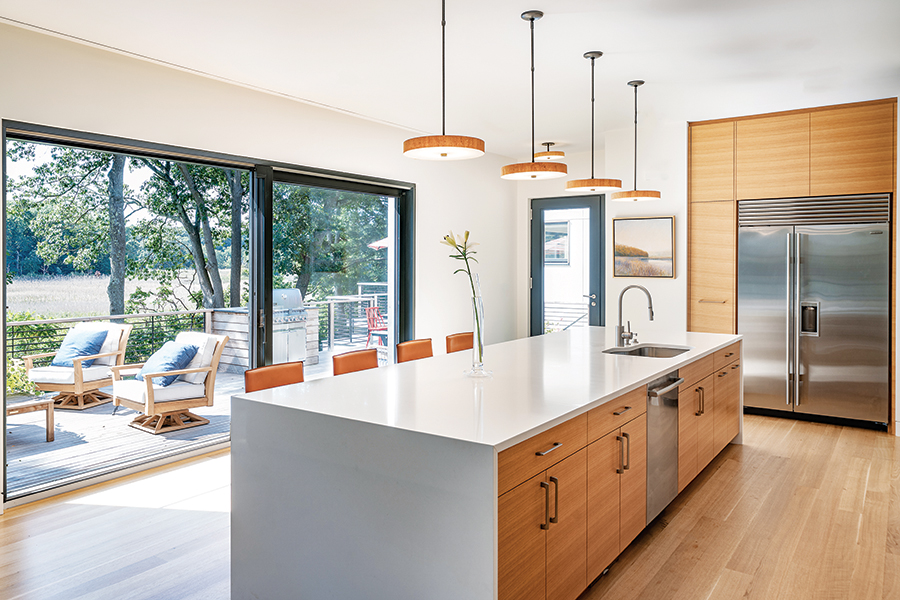
Photo by Eric Roth
Cut Consumption
Achieving a net-zero-energy status began with sealing the building envelope using a thick layer of continuous insulation, which Horowitz likens to a “winter jacket,” as well as incorporating triple-glazed windows. Then, to avoid using fossil fuels, the team opted for an air-source heat pump that relies on electricity. “The operational energy can be offset with the energy generated by the onsite solar panels,” Horowitz explains.
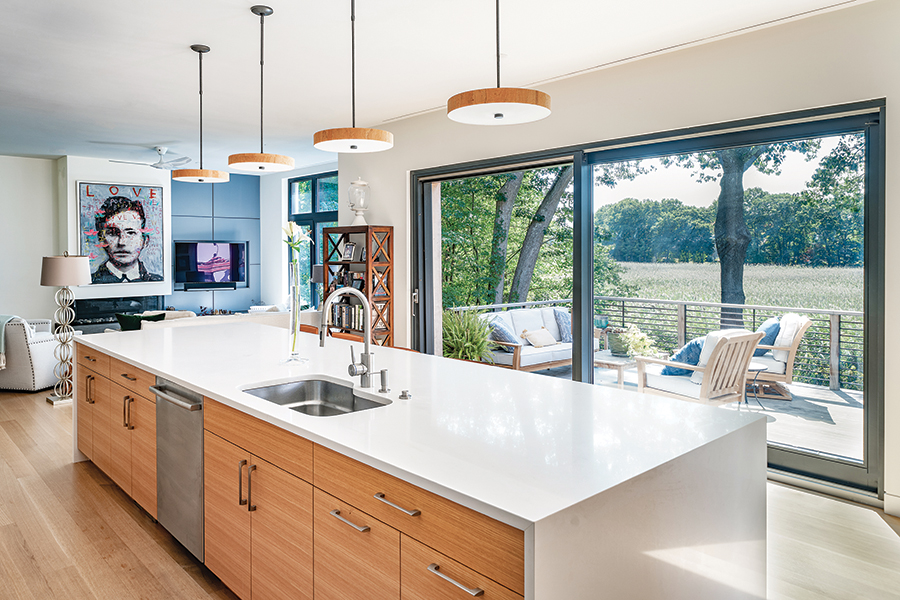
Photo by Eric Roth
Practice Restraint
Horowitz calls the couple’s vision for the home’s interior, with its white-oak flooring and neutral paint colors, “simple and modern.” The goals were to create spaces that flow easily from one to the next (cue: the circular, open-concept layout of the main floor) and maximize panoramas of the site. In the living area, for instance, an 8-foot-tall window that wraps the corner near the gas fireplace shows off the grassy marshland.
Architect
ZeroEnergy Design
Cabinetmaker
Sharp Woodworking
Solar Installer
My Generation Energy
By the Numbers
The Bay State has long been a leader in green-building and energy-conservation initiatives. Here’s a peek at how we’re doing today.
#2
National rank for energy efficiency in 2020, bested only by California.
24%
Portion of total greenhouse-gas emissions generated by residential buildings.
6,827
Number of LEED-certified professionals, as of 2019.
22,000
Approximate number of zero-emission vehicles sold between 2011 and 2019.
100,000+
Number of solar-powered projects, as of 2019.